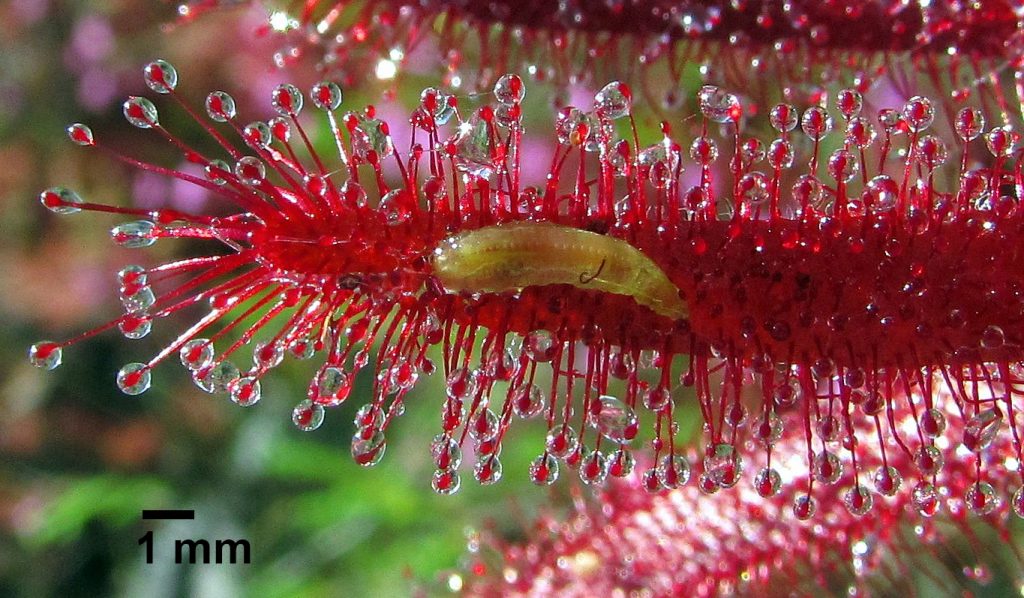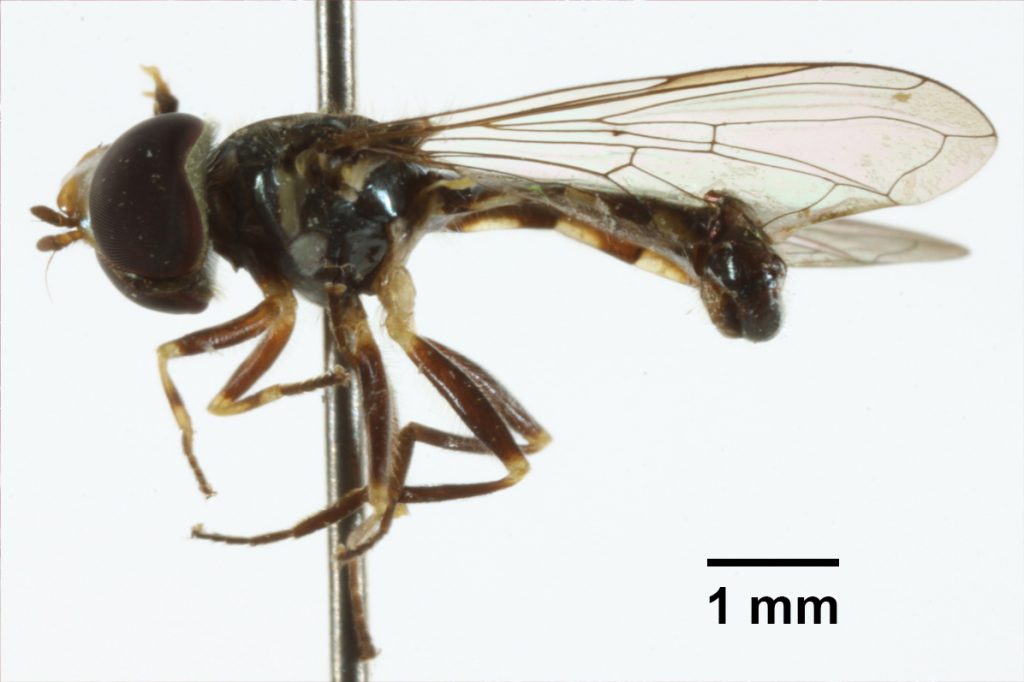Thievish hoverfly steals prey from carnivorous sundews
Hoverflies (also called flower flies), are conspicuous flower visitors of the dipteran family Syrphidae which often mimic the coloration of bees and wasps for protection, however they are totally stingless insects. The larvae (“maggots”) of most species are known to be beneficial organisms that feed on aphids and related insect pests of plants. However, aphids are relatively rare in the tropics of South America, also known as Neotropics, where a huge number of hoverfly species occur. Predatory larvae of some hoverfly species there hence became vegetarians, their larvae feeding on pollen or leaves, while larvae of other species prey on small adult flies, or larvae of various other insects. However, barely anything is known about the biology and diet of most known hoverflies species.
The more exciting is the discovery which has now been made in central Brazil, and was published by a team of German, Brazilian and Spanish botanists and entomologists in the journal PLOS ONE. The scientists discovered fly larvae that live on probably one of the most dangerous habitats for insects, namely the highly sticky leaves of carnivorous sundew plants. Covered by numerous tentacles that secrete a glistening, sticky mucilage, the sundews’ leaves constitute deadly traps for most insects – but where other insects get stuck and become a quick snack of this carnivorous plant, these perfectly adapted larvae can move effortlessly. Moreover, they feed on the insect prey that was caught by the sundews. The observed larvae spend their entire life on the sticky leaves of the plant as a commensal, feeding from the sundews’ meal. They do this without being digested themselves by the plant before they finally pupate – attached to the non-sticky and therefore harmless leaf underside of the plant. The adult hoverflies that emerged from the pupae were identified as Toxomerus basalis (both by morphological characters, as well as genetically by DNA sequencing). Remarkably, although this Brazilian hoverfly species has been known to scientists for 180 years (it was described in 1836), its larvae, feeding habits and biology were hitherto unknown and have now been documented for the first time.
Larvae of this larcenous fly have even been found on several different sundew species and in several states of Brazil, including on the recently discovered “Facebook-sundew” Drosera magnifica. “It could well be that this hoverfly is much more widespread than previously known, or that also other species of the genus Toxomerus show this interesting behavior,” said Fernando Rivadavia, who discovered the peculiar larvae. This discovery is a sensation in several respects: “This is the first known case of insect residents on sundews in South America, from where animal inhabitants of carnivorous plants were thus far only known from pitcher plants”, says botanist Andreas Fleischmann of the Botanical State Collection of Munich and author of the study. The biology of this unusual symbiosis is now to be further explored. “Moreover, this so-called kleptoparasitism represents a novel feeding mode for hoverflies, which is ecologically and evolutionarily remarkable,” said Ximo Mengual, entomologist and hoverfly specialist from the Museum Alexander Koenig in Bonn.
Publication:
Fleischmann, A., Rivadavia, F., Gonella, P.M., Pérez-Bañón, C., Mengual, X. & Rojo, S. (2016). Where is my food? Brazilian flower fly steals prey from carnivorous sundews in a newly discovered plant-animal interaction. PLOS ONE, doi: 10.1371/journal.pone.0153900
Dr. Andreas Fleischmann
Bavarian State Collection for Botany (SNSB-BSM)
Menzinger Str. 67, 80638 München
Tel.: +49 (0)89 17861 240
E-Mail: fleischmann@bsm.mwn.de
Contact:
Dr. Andreas Fleischmann
Bavarian State Collection for Botany (SNSB-BSM)
Menzinger Str. 67, 80638 München
Tel.: +49 (0)89 17861 240
E-Mail: fleischmann@bsm.mwn.de



